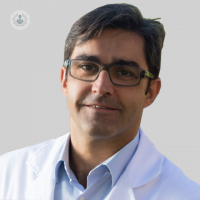Bariatric surgery, weight management in adolescents
Written by:Overweight and childhood obesity are on track to consolidate as genuine public health problems in developed countries. In developing countries, obesity is also entrenched. Many of the children will remain obese in adulthood and a part will become morbidly obese, even in adolescence.
As in the management of obesity in the adult, in the infantojuvenil population changes that are introduced in the diet, behavioral and physical activity sphere this group does not have approved drugs. The data are not very encouraging since less than 5 percent of children with morbid obesity manage to reverse it.
The Role of Bariatric Surgery
From this point on is when bariatric surgery comes on the scene, a strategy that is not curative in and of itself since it requires dietary maintenance after its completion. Bariatric surgery plays a prominent role in the integral treatment of morbid obesity, in adolescents it works and is safe, since they manage to reverse, in addition to obesity, the morbidities associated with it, such as diabetes, and also include Alterations in social and psychological life not insignificant.

Criteria for inclusion of bariatric surgery in adolescents
The specialists in General Surgery are resounding: the indications and contraindications of bariatric surgery in adolescents are clear and precise and, until a few years ago, much more restrictive than those observed in adults.
In fact, most Spanish bariatric surgery teams set the age limit for access in 18 years, when in some cases this approach could have been advanced, avoiding years of physical and psychological suffering. The criteria for an adolescent to enter into a bariatric surgery program have been established and reviewed by various national and international agencies.
In Spain, a panel of experts from nine scientific societies published in Obesity Surgery last year a consensus on the surgical management of obesity in children and adolescents.
Whether or not bariatric surgery is performed focuses on various criteria related to BMI, comorbidities or psychological conditions.
- BMI equal to or greater than 50 kg / m2 without comorbidities
- BMI between 40 and 50 kg / m2 with the patient affected by comorbidities
- Failure of lifestyle changes and medical treatment
Requirements to be met
- Exclusion of genetic causes and rare or treatable diseases of obesity
- Have reached pubertal development of Tanner 4-5 and at least 95% of adult height based on bone age
- Have an acceptable psychological maturity to take the changes after surgery. The adolescent has to actively participate in the process
- Having a favorable family environment capable of assuming post-surgical clinical follow-up
Possible contraindications
- Alcohol or drug abuse in the last year
- Psychiatric, food or cognitive impairment
- Pregnancy, lactation or gestational desire in the next two years
Depending on the characteristics of each adolescent, specialists in General Surgery and other specialists from other disciplines, will choose the moment and the most appropriate techniques for each case by performing the controls and the followings in the short, medium and long term.
Challenges about bariatric surgery
However, despite the fact that most of the Spanish reports on bariatric surgery emphasize its importance as part of the integral treatment of obesity, it is even suggested that this strategy could be undervalued and underutilized.
The proportions of accessibility to this surgery are very varied between European countries. In Spain 40 percent less bariatric, adult and child-care surgery is practiced than in countries such as Germany or France. It is suspected that we are below the demand that is needed. Recent reports indicate that only 2 per cent of the candidates are operated.
Currently, the development of new non-invasive technologies and the greater training of multidisciplinary teams have transformed the initial scenario, giving this surgery high levels of safety and efficacy. However, it is still underestimated in children, adolescents and adults.
There is still a lack of training and information between pediatricians and family doctors on how to proceed. Most of the time the pediatrician does not know where to refer the affected children and only a small proportion of serious cases come to specialized hospitals.
One of the great obstacles, as the scientific societies that address morbid obesity have shown, is that the exact number of adolescents and young people operated in Spain is unknown. The most experienced groups, such as Hebron Valley, have a series of 15 cases, but this is not the norm.
In order to propose new joint strategies for morbid obesity and to analyze achievements and shortcomings, it is absolutely necessary to create a Bariatric Surgery Register, a primary objective of SECO and in which, logically, adolescents would be included.
This would be a first step that could then lead to a retrospective analysis in which the professionals pointed out how many patients have been treated and what the results have been.


